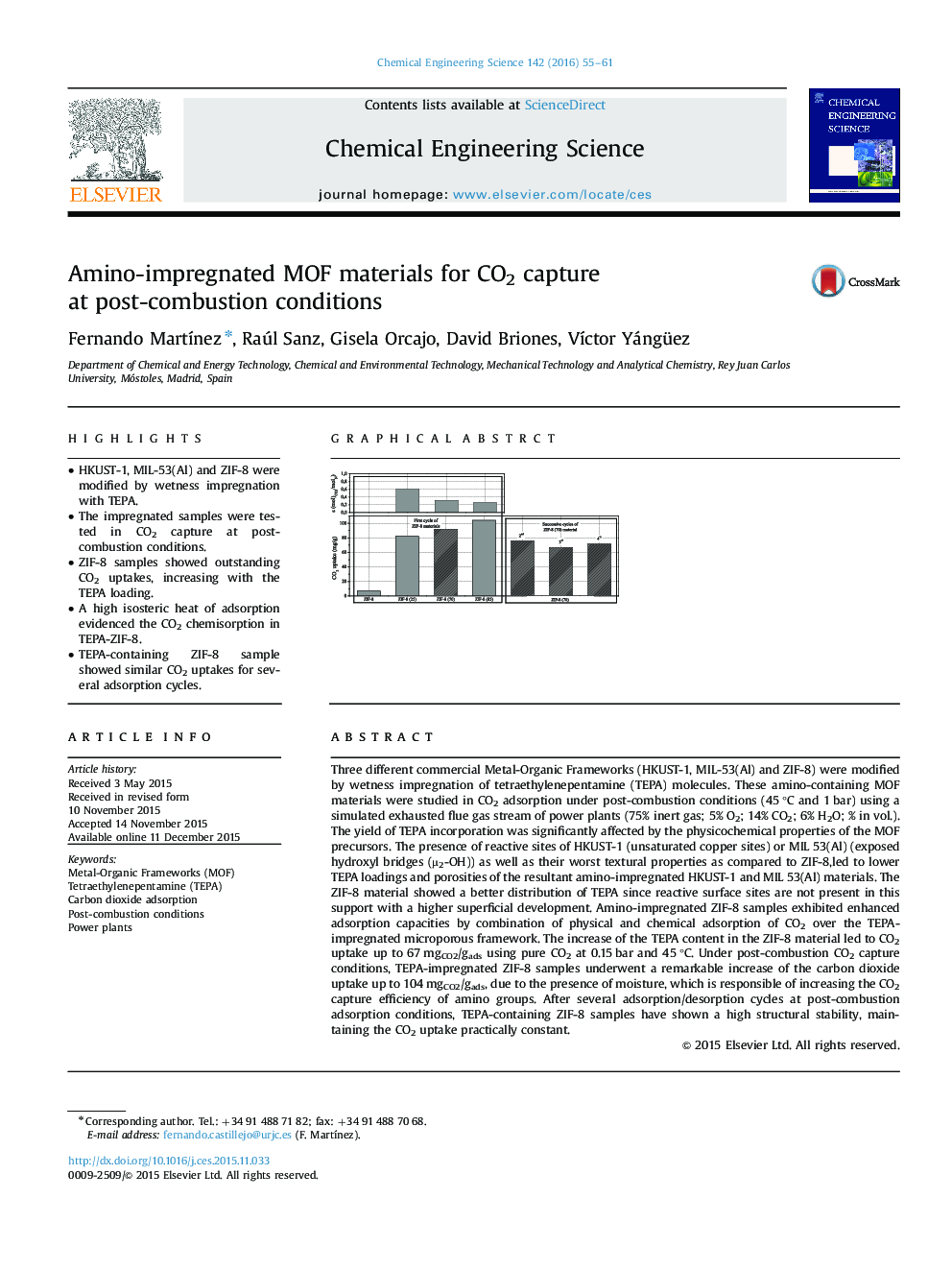| کد مقاله | کد نشریه | سال انتشار | مقاله انگلیسی | نسخه تمام متن |
|---|---|---|---|---|
| 154409 | 456838 | 2016 | 7 صفحه PDF | دانلود رایگان |

• HKUST-1, MIL-53(Al) and ZIF-8 were modified by wetness impregnation with TEPA.
• The impregnated samples were tested in CO2 capture at post-combustion conditions.
• ZIF-8 samples showed outstanding CO2 uptakes, increasing with the TEPA loading.
• A high isosteric heat of adsorption evidenced the CO2 chemisorption in TEPA-ZIF-8.
• TEPA-containing ZIF-8 sample showed similar CO2 uptakes for several adsorption cycles.
Three different commercial Metal-Organic Frameworks (HKUST-1, MIL-53(Al) and ZIF-8) were modified by wetness impregnation of tetraethylenepentamine (TEPA) molecules. These amino-containing MOF materials were studied in CO2 adsorption under post-combustion conditions (45 °C and 1 bar) using a simulated exhausted flue gas stream of power plants (75% inert gas; 5% O2; 14% CO2; 6% H2O; % in vol.). The yield of TEPA incorporation was significantly affected by the physicochemical properties of the MOF precursors. The presence of reactive sites of HKUST-1 (unsaturated copper sites) or MIL 53(Al) (exposed hydroxyl bridges (µ2-OH)) as well as their worst textural properties as compared to ZIF-8,led to lower TEPA loadings and porosities of the resultant amino-impregnated HKUST-1 and MIL 53(Al) materials. The ZIF-8 material showed a better distribution of TEPA since reactive surface sites are not present in this support with a higher superficial development. Amino-impregnated ZIF-8 samples exhibited enhanced adsorption capacities by combination of physical and chemical adsorption of CO2 over the TEPA-impregnated microporous framework. The increase of the TEPA content in the ZIF-8 material led to CO2 uptake up to 67 mgCO2/gads using pure CO2 at 0.15 bar and 45 °C. Under post-combustion CO2 capture conditions, TEPA-impregnated ZIF-8 samples underwent a remarkable increase of the carbon dioxide uptake up to 104 mgCO2/gads, due to the presence of moisture, which is responsible of increasing the CO2 capture efficiency of amino groups. After several adsorption/desorption cycles at post-combustion adsorption conditions, TEPA-containing ZIF-8 samples have shown a high structural stability, maintaining the CO2 uptake practically constant.
Graphical abstrctFigure optionsDownload high-quality image (287 K)Download as PowerPoint slide
Journal: Chemical Engineering Science - Volume 142, 13 March 2016, Pages 55–61